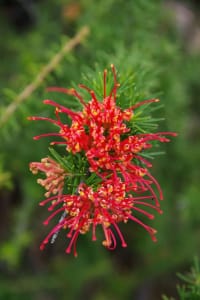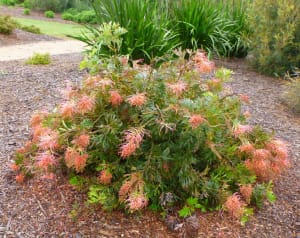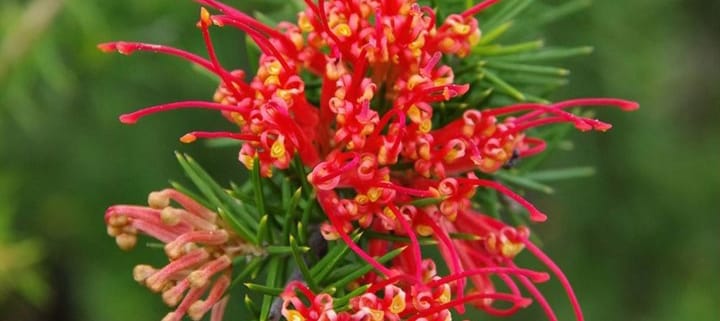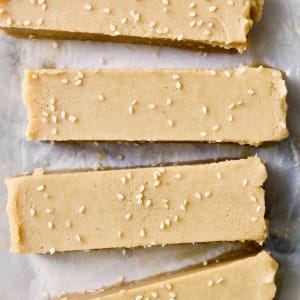Great Grevillea
Keith Mundy
Heading into winter, I thought it timely to again talk about the genus of native plants that is probably the most widely grown in Australian gardens and that is Grevillea.
 The plants in this amazing group come in many forms, from genuine species to varieties that have been developed by hybridisation where, usually, several plants have been crossed to select a plant that has all the good attributes of its parents. This hybridisation can be done in a nursery situation where a nurseryman wishes to develop a new plant or can be done by nature itself when two different species that are growing side by side are cross pollinated resulting in a seedling that germinates nearby and is then discovered by a human who recognises it as a new form and grows it on to produce a new variety.
The plants in this amazing group come in many forms, from genuine species to varieties that have been developed by hybridisation where, usually, several plants have been crossed to select a plant that has all the good attributes of its parents. This hybridisation can be done in a nursery situation where a nurseryman wishes to develop a new plant or can be done by nature itself when two different species that are growing side by side are cross pollinated resulting in a seedling that germinates nearby and is then discovered by a human who recognises it as a new form and grows it on to produce a new variety.
In recent times a new growing method has come into play where a beautiful species, say from Western Australia, has been grafted onto an east coast species to give that plant the ability to grow outside its normal growing area. In many cases the understock used will be Grevillea robusta (Silky Oak) and this gives the plant the ability to handle conditions, like clay soils and humidity, experienced on the east coast. A lovely example of this is Grevillea plurijuga ‘Purple Haze’ that originated in Western Australia but can now be grown on the east coast as a grafted specimen.
Many groundcover forms have also been grafted onto what is called a high graft, that is on a standard of about one to one and a half metres in height, similar to a standard rose. These plants are great in a pot or as a special feature in a particular part of the garden.
With the new breeding of plants, many plants have been selected to suit pot culture. Care must be taken to use a variety that won’t need a lot of pruning to keep it in check. The variety I have used is ‘Peaches and Cream’. This is one of the most prolific flowering and all-round great grevilleas that has been developed in recent years. Not only is it good for pots, bird attraction and the like but will grow in a garden from first line coastal positions to inland gardens.
If using Grevillea in pots, it is advisable to use a potting mix formulated for natives that has been especially developed to suit them. Fertilise with a slow release or liquid native plant food.
 One special feature of Grevillea is that there many forms that will flower all year around but more especially throughout winter, which is great for providing food for bees and birds throughout the colder months.
One special feature of Grevillea is that there many forms that will flower all year around but more especially throughout winter, which is great for providing food for bees and birds throughout the colder months.
Grevillea will grow in a wide range of soils from loam through to clay but are not overly fond of sandy soil. In preparation for planting, a wide but not too deep hole should be dug and, depending on the heaviness of the clay, some organic planting mix could be mixed with your existing soil to give the plant a good start. Water in with a combination seaweed and fish emulsion fertiliser. These are not too strong as an initial fertiliser and have a natural growth stimulant to help in establishment. Fertilising from that point on should be at regular intervals throughout the year with a native plant food, though usually not during winter.
There are very few diseases that can cause problems with Grevillea and a trip to the local nursery with an example of the problem will usually solve the problem quickly.
Other maintenance includes a regular prune to keep them in shape and to promote new flowering wood. Don’t be afraid to cut them back hard. They will thrive from this.


